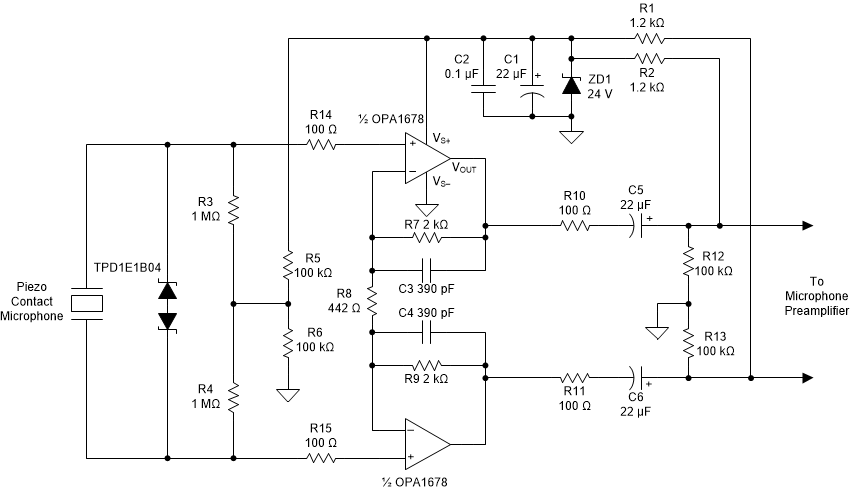SBOS855E January 2017 – December 2022 OPA1677 , OPA1678 , OPA1679
PRODUCTION DATA
- 1 Features
- 2 Applications
- 3 Description
- 4 Revision History
- 5 Pin Configuration and Functions
- 6 Specifications
- 7 Detailed Description
-
8 Application and Implementation
- 8.1 Application Information
- 8.2 Typical Applications
- 8.3 Power Supply Recommendations
- 8.4 Layout
- 9 Device and Documentation Support
- 10Mechanical, Packaging, and Orderable Information
Package Options
Mechanical Data (Package|Pins)
Thermal pad, mechanical data (Package|Pins)
- RUM|16
Orderable Information
8.2.1 Phantom-Powered Preamplifier for Piezo Contact Microphones
Contact microphones are useful for amplifying the sound of musical instruments that do not contain electric pickups, such as acoustic guitars and violins. Most contact microphones use a piezo element to convert vibrations in the body of the musical instrument to a voltage which can be amplified or recorded. The low noise and low input bias current of the OPA1678 make the device an excellent choice for high impedance preamplifiers for piezo elements. This preamplifier circuit provides high input impedance for the piezo element but has low output impedance for driving long cable runs. The circuit is also designed to be powered from 48-V phantom power which is commonly available in professional microphone preamplifiers and recording consoles.
A TINA-TI™ simulation schematic of the circuit below is available in the Tools and Software section of the OPA1678 or OPA1679 product folder.
 Figure 8-1 Phantom-Powered Preamplifier for Piezo Contact Microphones
Figure 8-1 Phantom-Powered Preamplifier for Piezo Contact Microphones